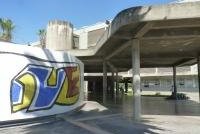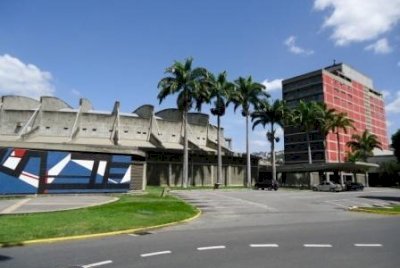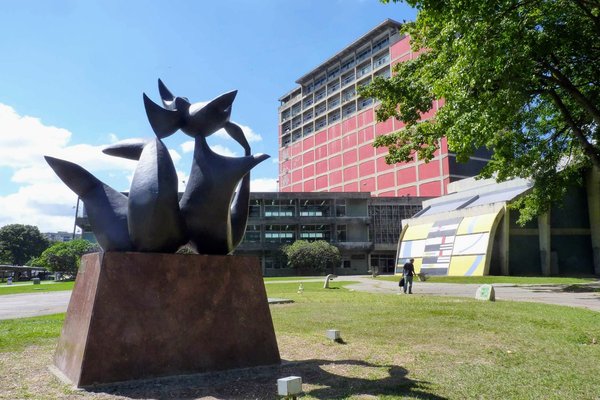Venezuela
Ciudad Universitaria de Caracas
The Ciudad Universitaria de Caracas (University of Caracas) is an outstanding example of the Modern Movement in architecture.
The University Campus was constructed between 1940 and 1960 by the Venezuelan architect Carlos Raúl Villanueva. He used the latest avant-garde ideas in architecture and spatial elements from Venezuelan colonial architecture suited to the tropical climate to create an open and ventilated solution. The complex also includes masterpieces of visual arts, like the "Clouds" of Alexander Calder.
Community Perspective: the campus is easily accessible by metro, and despite all the concrete, a visit is interesting enough to see location-specific solutions such as “passages allowing students to walk in shadow during sunny days”. Solivagant ponders the University’s merits as a WHS.
Site Info
Official Information
- Full Name
- Ciudad Universitaria de Caracas (ID: 986)
- Country
- Venezuela
- Status
-
Inscribed 2000
Site history
History of Ciudad Universitaria de Caracas
- 2000: Inscribed
- Inscribed
- Type
- Cultural
- Criteria
- i
- iv
Links
- UNESCO
- whc.unesco.org
- Official
-
- patrimoniocuc.wordpress.com — Patrimonio CUC
- Related
-
- ucv.ve — Extensive description at the website of CUC
All Links
UNESCO.org
- whc.unesco.org — whc.unesco.org/
Official Website
- patrimoniocuc.wordpress.com — Patrimonio CUC
Related Resources
- ucv.ve — Extensive description at the website of CUC
News Article
- July 8, 2021 nytimes.com — This World Heritage Site Is in Ruins, and That’s Not by Accident
Community Information
- Community Category
- Secular structure: Science and Education
Travel Information
Red Zone Travel Advisory
All of Venezuela. "A state of emergency is currently in place due to military …
Recent Connections
-
Red Zone Travel Advisory
All of Venezuela. "A state of emergency…
-
Free entrance
-
Universities
Connections of Ciudad Universitaria de Caracas
- Geography
-
-
Located in a Capital City
Caracas (Capital of Venezuela)
-
- Architecture
-
-
Modern Urban Planning
Criterion i :The Ciudad Universitaria de Caracas is a masterpiece of modern city planning, architecture and art, created by the Venezuelan architect Carlos Raúl Villanueva and a group of distinguished avant-garde artists. -
Reinforced Concrete
-
- World Heritage Process
-
-
Perfect Inscriptions
2000
-
- Human Activity
-
-
Locations for playing sport
Olympic Stadium
-
- WHS on Other Lists
-
-
World Monuments Watch (past)
Facultad de Arquitectura y Urbanismo (2010); 2014
-
- Timeline
-
-
Built in the 20th century
1960s.
-
- Science and Technology
-
-
Botanical Gardens
The Caracas Botanical Gardens are part of the University and the inscribed site -
Libraries
The campus includes a series of large buildings, in particular ... the Library (AB ev) -
Universities
-
- Visiting conditions
-
-
Red Zone Travel Advisory
All of Venezuela. "A state of emergency is currently in place due to military strikes. The security situation is unpredictable and may worsen."
-
Free entrance
-
News
- nytimes.com 07/08/2021
- This World Heritage Site Is in Rui…
Recent Visitors
Visitors of Ciudad Universitaria de Caracas
- Adrian Turtschi
- Alberto Rodriguez Gutierrez
- Alejandro Lau
- Alexander Lehmann
- Ali Zingstra
- Artur Anuszewski
- Atila Ege
- Bram de Bruin
- Carlos Sotelo
- Cirene Moraes
- ctravel
- Erik Jelinek
- George Gdanski
- giloudepuertorico
- Harald T.
- Harry Mitsidis
- Jarek Pokrzywnicki
- Loic Pedras
- Lucas Del Puppo
- Luis Filipe Gaspar
- Niall Sclater
- Nihal Ege
- Piotr Wasil
- Rick Ohm
- Roger Ourset
- Solivagant
- Stijn
Community Reviews
Show full reviews
The Ciudad Universitaria de Caracas is, with UNAM (Mexico), one of 2 inscribed mid 20th Century Latin American University campuses – is this either a surprising coincidence or evidence of some genuine value in unexpected locations?
It is situated in the South East of this narrow east/west oriented city and is accessible by metro to the eponymous station. We had driven through it quickly on a previous visit to Caracas many years ago but, on our second visit, gave it more time on foot in the hope that it would yield more “value”. The place is not set up for tourists (or WHS enthusiasts!) and our greatest disappointment was that we couldn’t get into the “Aula Magna” – the University’s main hall for concerts etc. This building is “famed” for the acoustic “clouds” (also dubbed “flying saucers”) by Alexander Calder, the “inventor” of mobile sculptures. As the other reviewers have noted, a particular aspect of the campus is the presence of long concrete covered walkways between the various buildings. We also visited the botanical gardens which are situated to the right of the northern entrance. We did so originally solely to have a pleasant walk through tropical plants away from the city bustle and hadn’t realized that they are a fully WHS-Inscribed part of the university and hold the botany faculty. We were “royally” welcomed by the staff when our Taxi driver who had brought us up from the port city of La Guaira rather warmed to the idea of …
Keep reading 0 comments
Site visited in March, 2011. Easy accessibile (close to a metro station), the whole area due to its university status looks pretty safe (at least during the daytime), security was the main concern while visiting Venezuela. At first it looks a little bit dissappointingly - all the buildings are made of concrete, they are modern (in terms of architecture style) but after a while you can spot that it is really an entire complex of different buildings but designed in the same manner. Architecture is simple but practical, some solutions are spectacular (those passages allowing students to walk in shadow during sunny days). So for me the place is interesting although I know that some people may be dissapointed.
Keep reading 0 comments
I visited the site in August 2009.
The non-architect may wonder at first what all the fuss is about but as you stroll along the concrete covered passageways and look around the vision of the architect slowly emerges. Whether or not you like the style, there is a cohension and obvious "stamp" of an individual on the buildings and landscape without any quality of boring sameness or jarring differences in style or architectural "interactions." That is what the inscription as a heritage site appears to celebrate.
I was surprised at how the use of concrete takes into account, for the most part, the tropical setting with open spaces, covered arcades, access to natural light and lines and curves that often blunt the heaviness one might associate with concrete.
There were buildings that needed repair, some more than others, and broken windows, leaks and cracks in some of the structures but the overall neglect the previous publisher noted seems to have been addressed in some cases. Some of the buildings, especially the student residences looked like government housing projects or cheap "garden apartments" while others, such as the cafeteria were truly unique in their design and use of space. Unfortunately the college was not in session and it was not possible to get a look inside some of the more intriguing structures such as the concert hall or to get a feel for how humans interact with the architectural space.
Depending on how interested you are in architecture an hour or …
Keep reading 0 comments
